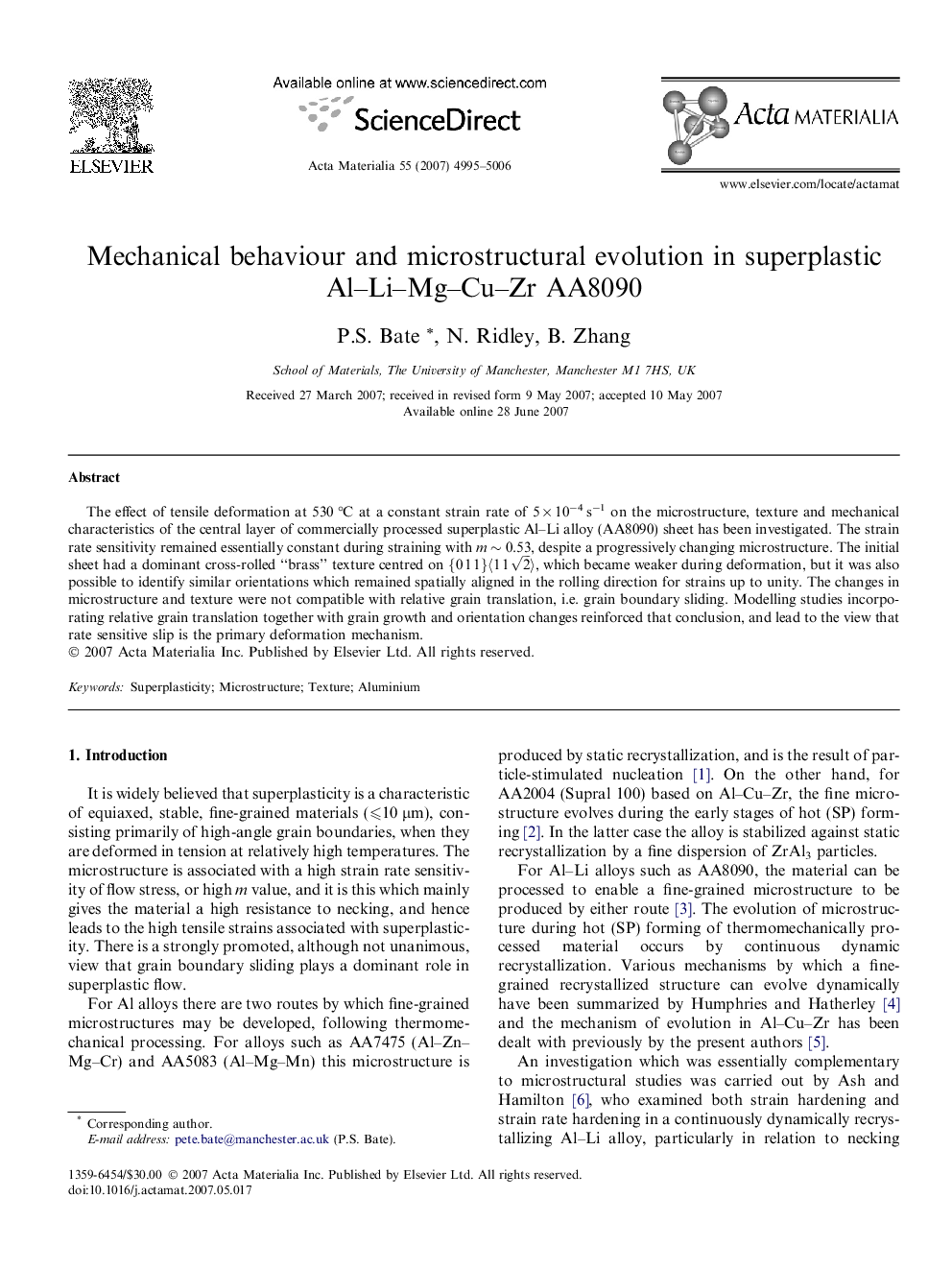| Article ID | Journal | Published Year | Pages | File Type |
|---|---|---|---|---|
| 1450764 | Acta Materialia | 2007 | 12 Pages |
The effect of tensile deformation at 530 °C at a constant strain rate of 5 × 10−4 s−1 on the microstructure, texture and mechanical characteristics of the central layer of commercially processed superplastic Al–Li alloy (AA8090) sheet has been investigated. The strain rate sensitivity remained essentially constant during straining with m ∼ 0.53, despite a progressively changing microstructure. The initial sheet had a dominant cross-rolled “brass” texture centred on {011}〈112〉, which became weaker during deformation, but it was also possible to identify similar orientations which remained spatially aligned in the rolling direction for strains up to unity. The changes in microstructure and texture were not compatible with relative grain translation, i.e. grain boundary sliding. Modelling studies incorporating relative grain translation together with grain growth and orientation changes reinforced that conclusion, and lead to the view that rate sensitive slip is the primary deformation mechanism.
